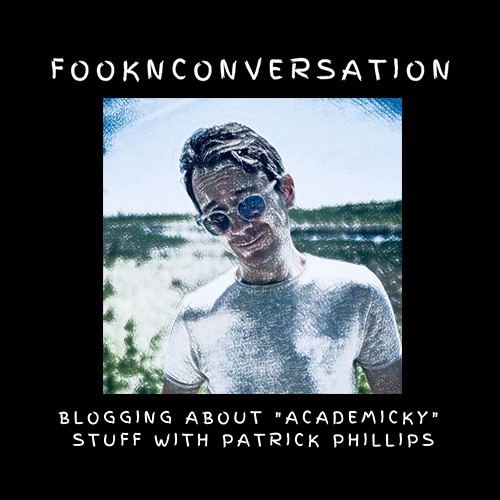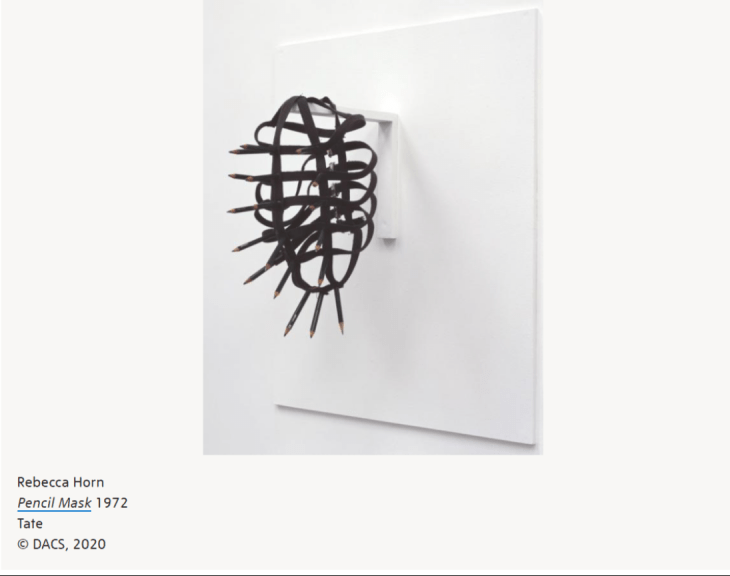
A reader’s response to Dr. Hongyu Wang’s nonviolent relationality by Patrick Phillips.
I, like others in our immediate (EDU6102) writing community, approached Dr. Hongyu Wang’s alignment with Jungian psychoanalytic theory with some skepticism; psychoanalysis often connotes certain kinds of historical and epistemological baggage. However, I realised that I appreciate the practicality of Wang’s application of Jungian interconnectedness. Indeed, I think it might be difficult to critique Wang’s theories, as presented, as she eventually raises (across our course readings and podcast) most of the counterpoints I might raise—e.g. issues of essentialism—yet still leaves me with a compelling perspective that I think a) contributes to the discussions we’ve had so far (e.g. Donald 2009; 2019), and b) actually offers useful opportunities for theoretical connections between curriculum studies as a discipline and what I hope to explore in my own research. Of course, I also think that there are c) questions left unanswered—specifically how the premises raised by Wang also imply a potentially unexplored challenge within our present moment of COVID-related distancing. I think my thoughts on a, b, and c all converge on two quotes shared by Wang:
If I am separate from you, why would I deal with [your] problems?
— Wang, in conversation with Nicholas, Ng-A-Fook, 2020
If I don’t have the imagination to realize that you and I are one, despite our physical separateness and the differences in our outlooks on life, what’s to prevent me from using violence if I think you’re getting in my way?
— Nagler, 2004, p. 42, qtd in Wang, 2019, p. 381
Wang is in fact laying bare a sense of a relational foundation of interconnectedness as a basic human need, and the lack of the same as a perennial, ever-present precondition for violence. Wang’s conception of nonviolence is not an ends of a pedagogical means (Wang, 2018), but involves a process not incompatible with Donald’s (2009; 2019) “unlearning”, and which is also strongly connected to Lindsay Gibson’s (2018) historical thinking, and Pinar and Aoki’s linguistic and autobiographical turn in curriculum studies:
The intersections between Jungian psychic life and nonviolent relations question such an assertion; our ancestral and individual histories have made human fellowship a necessity for an individual’s existence and our species’ survival. Between the individual and the social, I argue, the strongest link is not the psychoanalytic reparation but the inherent human need for an affiliated way of life. (Wang, 2019, p. 381)
Although Wang herself found personal reparation of a fragmented self through currere and investigating her own unconscious as a conscious effort toward integrating the multiplicities of her international identities, the goal of a Jungian nonviolence is to enable teachers to reimagine themselves as empathetic companions in relation to their students as interconnected kin, rather than custodians of a more compassionate frontier logics. In Wang’s case, I read her warning of our psychic attachment to the metaphor of war, typically the underlying narrative of violence in society and education, as a kind of fort that constrains our ability to think outside of adversarial, capitalistic terms.
Indeed, what I’ve personally realised as a curriculum scholar, through our modules so far, is that there is a yearning for some kind of realism as part of a curricular epistemology. I realise that I also want the same. I want to explore aspects of curriculum that aren’t exactly ‘hidden’ or ‘null’, but that are emergent of real people in real situations—but that are, at least I think in good exemplars, infused with a collective sense of care. I’ve experienced pushback from both artist and curriculum colleagues in the past, when trying to articulate practices of critique as needing such a sense of interconnectedness. I remembered while reading Wang, however, that much of the lasting socially-valent—even activist—traditions of Western art emerged from visual artists exploring the potential of psychoanalysis, particularly with regards to unconscious violence beneath nationalism, gender, and heroic narratives of war.
In fact, movements like surrealism were originally strongly associated with psychoanalysis via Dadaism and other forms of political art, the makers of which often sought, amidst the devastation of WWII, to explicitly challenge the metaphors and dualistic ways of thinking and seeing that infuse our everyday lives. In effect, surrealism, and much of art in general, is not meant to diverge from reality, but to make ‘the real’ strange enough to consciously notice, including the violent potential of a patriotic, patriarchal, and economically-productive self. (While most people associate surrealism with Salvador Dali, his more popular work was more representational of illusionism, a far more marketable, capitalism-friendly aesthetic.) It is quite refreshing to see such work directed to realising care and empathy and taken so seriously.
And so, what Wang offers, I think, is something quite special—a realism of care. However, educational discursive genres except for ECE (Early Childhood Education) are rarely entertained as care fields. While I’ve had difficulty being taken seriously when I’ve written of care and generosity as necessities in teaching, I wonder how our collective efforts to distance ourselves from each other might beg a new prioritizing of ways to strengthen a psychic closeness—that is, interconnectedness. I think we’re probably doing better than most—with our weekly zoom gatherings—but I’m wondering what we might not be conscious of as we learn and teach remotely. What would Wang’s companionship look like in a post-COVID world?
I’d like to sign off with a piece of surrealist art (carrying the same Jungian DNA as Wang’s work) by Rebecca Horn as a metonymic lens. In the piece below, Horn made a harness-like mask for a face with pencils drawing outward, which makes it possible to make physical (through physical mark-making) the relational interstices that we often bracket out of conscious perception. However, to do so, Horn essentially makes a machine. I wonder: how could we use our curricular machinery (our virtual affordances) to do the same, or are we suddenly even more disadvantaged in trying to foster interconnectedness because of our current, masked and technology-mediated reality?

References
Aoki, T. T. (1992/2005). In the Midst of Slippery Theme-Words: Living as Designers of Japanese Canadian Curriculum. In William F. Pinar and Rita Irwin (Eds.), Curriculum in a New Key, (pp. 263-278). New Jersey: Lawrence Erlbaum Associates.
Donald, D. (2009). Forts, curriculum, and Indigenous Métissage: Imagining decolonization of Aboriginal-Canadian relations in educational contexts. First Nations Perspectives, 2(1), 1-24.
Donald, D. (2019). Homo economicus and forgetful curriculum: Remembering other ways to be a human being. In S. Styres, H. Jahnke & S. Lilly (Eds.). Indigenous education: New directions in theory and practice. Edmonton: University of Alberta Press, pp. 103-125.
Gibson, L. (2018). Ethical Judgments About the Difficult Past: Observations From the Classroom (pp. 81-103). In Magdalena Gross & Luke Terra. (Eds.). History and Social Studies Education in a Context of Intolerance. New York, New York: Routledge.
Horn, R. (1972). Pencil Mask. Fabric, pencils and metal. Tate.
Liran, R. (2016). On the Need for Openness to the Humanities in Psychoanalysis. Psychoanalytic Psychology, 33(1), pp. 56-74. http://dx.doi.org/10.1037/pap0000064
Lomas, D. (2012). Becoming Machine: Surrealist Automatism and Some Contemporary Instances. Tate Papers, no. 18. https://www.tate.org.uk/research/publications/tate-papers/18/becoming-machine-surrealist-automatism-and-some-contemporary-instances
Nagler, M.N. (2004). The search for a nonviolent future. Maui: Inner Ocean.
Ng-A-Fook, N. (2020). Episode 3: Hongyu Wang. Fookinconversation. Podcast. https://www.fooknconversation.com/podcast/episode-03-hongyu-wang/
Wang, H. (2019). An Integrative Psychic Life, Nonviolent Relations, and Curriculum Dynamics in Teacher Education. Studies in Philosophy and Education 38, pp. 377–395.
Wang, H. (2018). Nonviolence as teacher education: a qualitative study in challenges and possibilities. Journal of Peace Education, 15(2), pp. 216-237.

